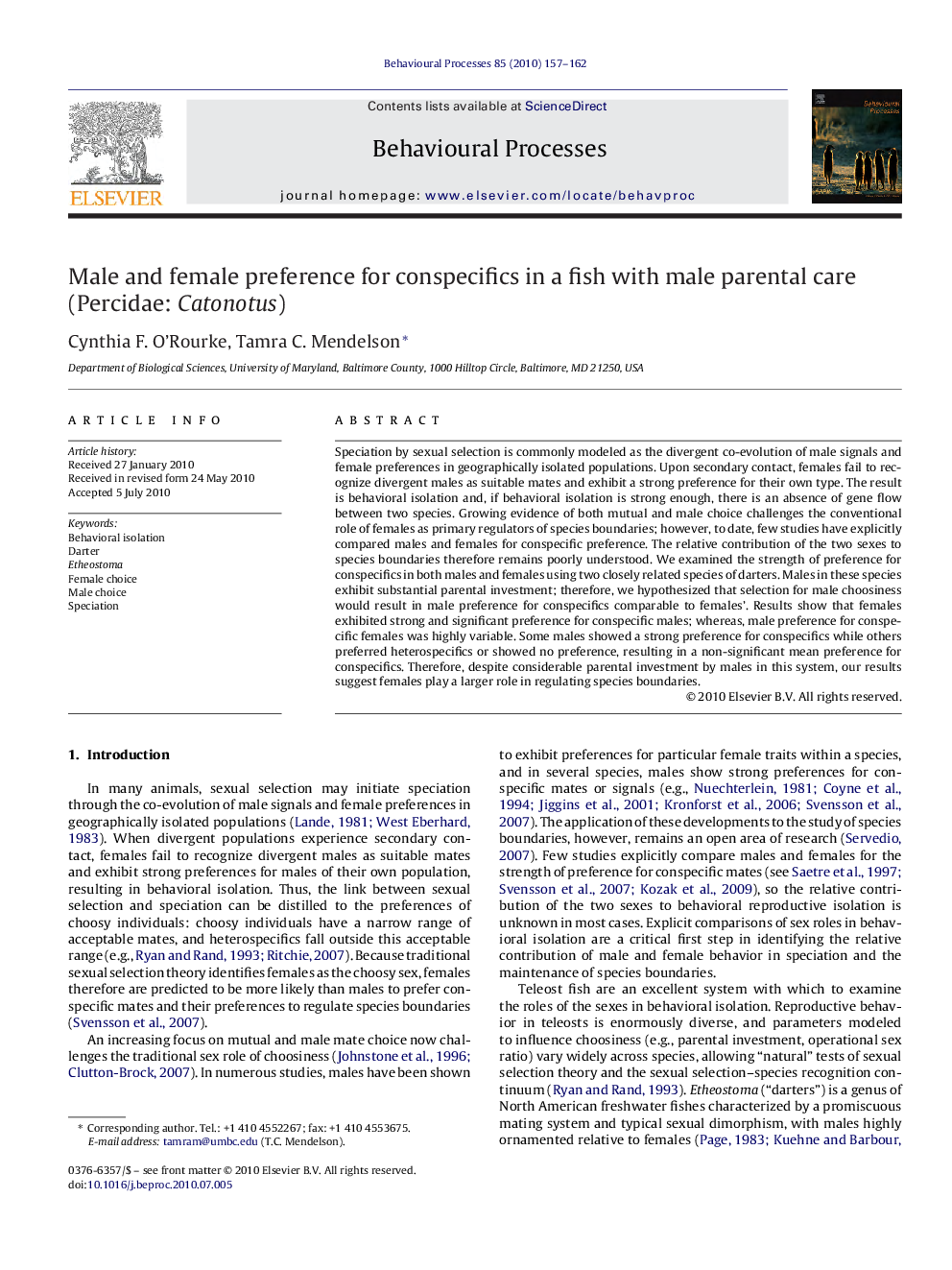| Article ID | Journal | Published Year | Pages | File Type |
|---|---|---|---|---|
| 2427472 | Behavioural Processes | 2010 | 6 Pages |
Speciation by sexual selection is commonly modeled as the divergent co-evolution of male signals and female preferences in geographically isolated populations. Upon secondary contact, females fail to recognize divergent males as suitable mates and exhibit a strong preference for their own type. The result is behavioral isolation and, if behavioral isolation is strong enough, there is an absence of gene flow between two species. Growing evidence of both mutual and male choice challenges the conventional role of females as primary regulators of species boundaries; however, to date, few studies have explicitly compared males and females for conspecific preference. The relative contribution of the two sexes to species boundaries therefore remains poorly understood. We examined the strength of preference for conspecifics in both males and females using two closely related species of darters. Males in these species exhibit substantial parental investment; therefore, we hypothesized that selection for male choosiness would result in male preference for conspecifics comparable to females’. Results show that females exhibited strong and significant preference for conspecific males; whereas, male preference for conspecific females was highly variable. Some males showed a strong preference for conspecifics while others preferred heterospecifics or showed no preference, resulting in a non-significant mean preference for conspecifics. Therefore, despite considerable parental investment by males in this system, our results suggest females play a larger role in regulating species boundaries.
